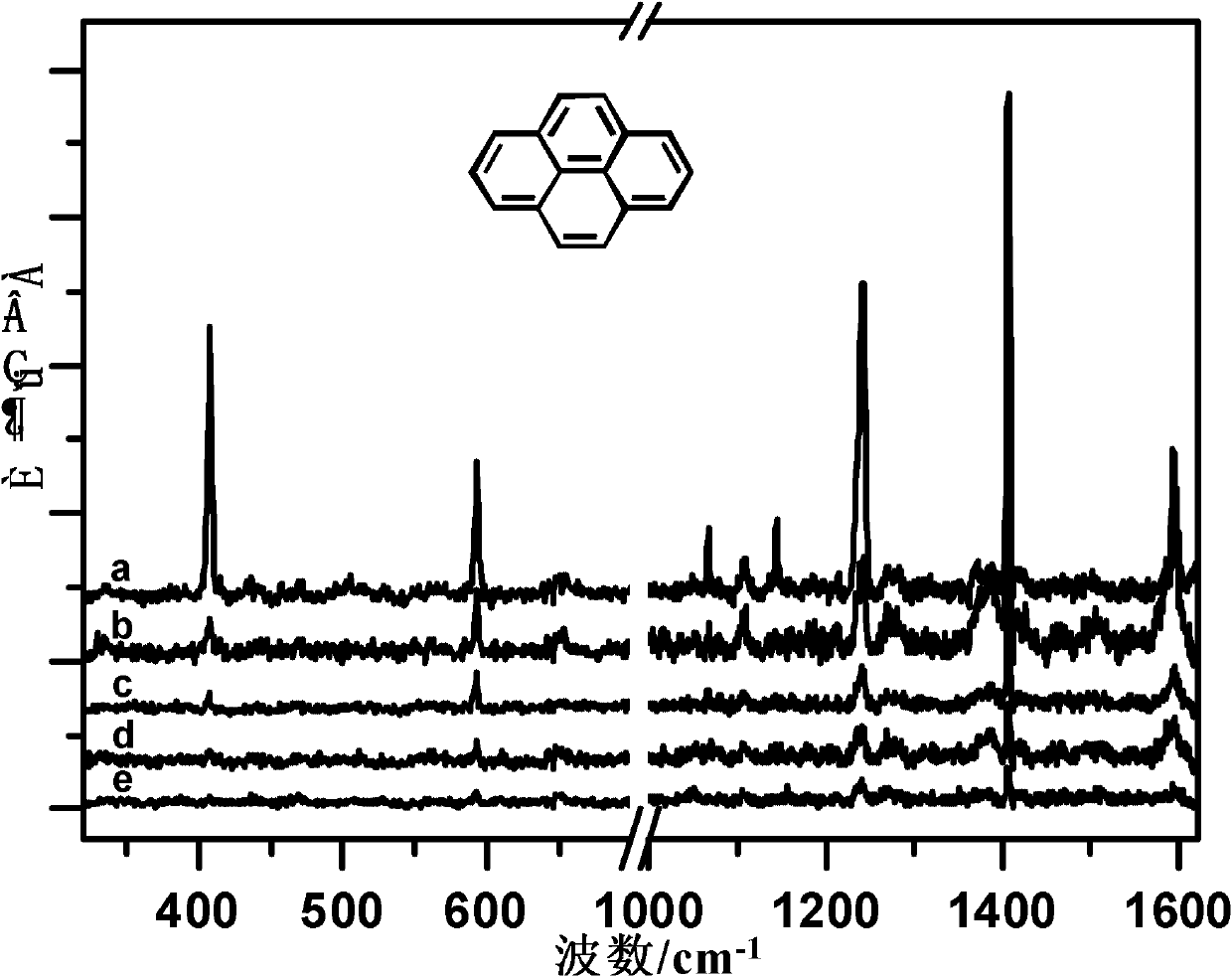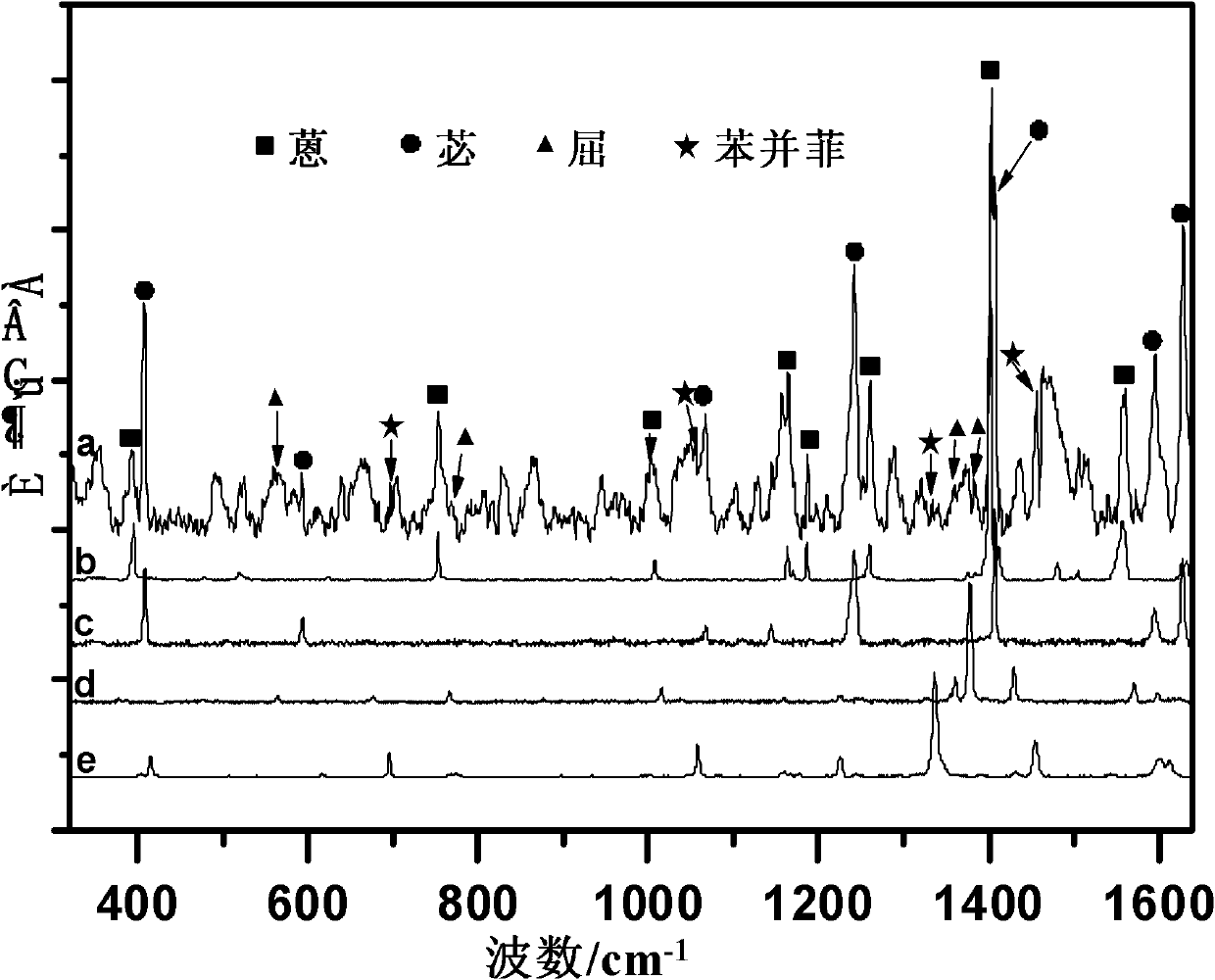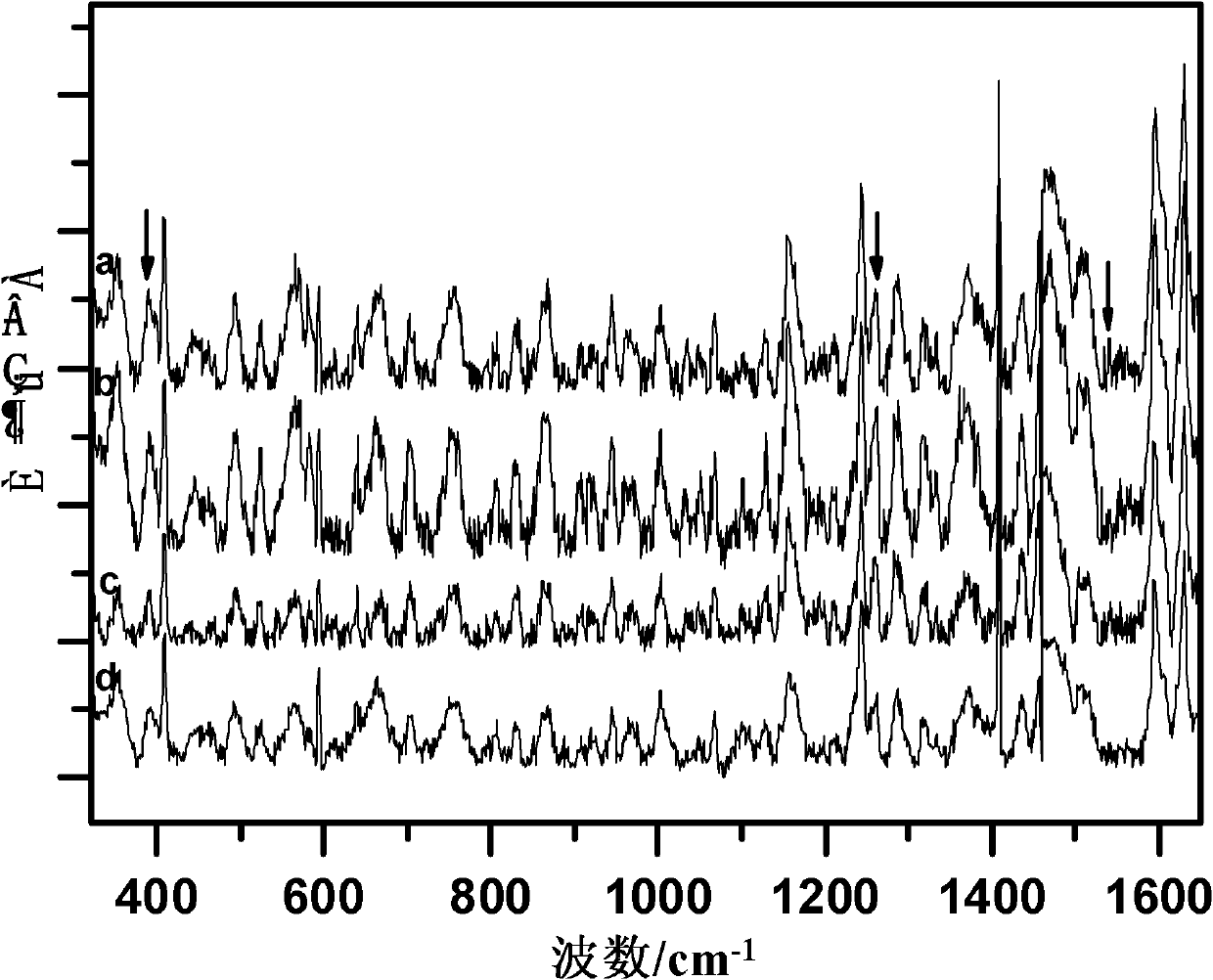Surface enhanced Raman detection method for polycyclic aromatic hydrocarbon and substitute thereof
A surface-enhanced Raman and substitution technology, which is applied in Raman scattering, material excitation analysis, etc., can solve the problems of unfavorable specific detection of polycyclic aromatic hydrocarbons, weak binding ability between modifiers and metal substrates, etc., and achieve rapid characterization and the effect of trace detection
- Summary
- Abstract
- Description
- Claims
- Application Information
AI Technical Summary
Problems solved by technology
Method used
Image
Examples
Embodiment 1
[0020] Example 1: SERS detection of trace amounts of polycyclic aromatic hydrocarbons
[0021] (1) Dissolve the trace amount of boron to be measured in ethanol to prepare different concentrations of boron to be tested (concentrations of 1×10 -4 , 1×10 -5 mol / L, 1×10 -6 mol / L, 1×10 -7 mol / L, 1×10 -8 mol / L);
[0022] (2) The preparation of gold sol is to combine HAuCl 4 First prepare a 0.01% distilled water solution, take 100mL of the solution and heat it to boiling, accurately add 1mL of a 1% mass concentration of 1% trisodium citrate distilled water solution under agitation, continue to heat and boil for 15 minutes, cool to room temperature and restore the volume to 100mL with distilled water . Then mix 1mL of gold sol and 1mL (10 -6 mol / L) The distilled aqueous solution of cyclodextrin substituted with sulfhydryl group is mixed overnight, the particle size of the gold sol is 50nm;
[0023] (3) Take 50uL each of the test solution prepared in step (1) and the solution in step (2) and...
Embodiment 2
[0026] Example 2: SERS qualitative identification of a variety of polycyclic aromatic hydrocarbon mixtures
[0027] Same as the operation of each step in Example 1, the difference is that step (1) is a mixture of four polycyclic aromatic hydrocarbons, namely anthracene, anthracene, triphenylene and triphenylene, each with a concentration of 1×10 -5 mol / L. The obtained SERS spectra of four polycyclic aromatic hydrocarbon mixtures ( figure 2 ), the SERS spectrum of the mixture contains the SERS characteristic peaks of each PAH. The spectrum reflects the characteristic Raman vibrations of the four mixtures of anthracene, anthracene, triphenylene and triphenanthrene, and proves that the present invention can qualitatively identify polycyclic aromatic hydrocarbons.
Embodiment 3
[0028] Example 3: SERS trace detection of a variety of polycyclic aromatic hydrocarbon mixtures
[0029] The same as the operation of each step in Example 1, the difference is that step (1) is a mixture of anthracene, anthracene, benzophenanthrene, and anthracene. The concentration of anthracene changes, and the concentration of anthracene, benzophenanthrene and benzophenanthrene remains unchanged (both 1×10 -5 mol / L), and respectively measure the SERS spectra ( image 3 ). As the concentration of anthracene changes in the mixture, the intensity of the three characteristic Raman peaks of anthracene also changes. From the variation of Raman peak intensity with the concentration of anthracene, trace detection of the content of anthracene in the mixture can be performed, so the present invention can also be used for trace SERS detection of a variety of polycyclic aromatic hydrocarbons.
PUM
| Property | Measurement | Unit |
|---|---|---|
| particle diameter | aaaaa | aaaaa |
Abstract
Description
Claims
Application Information
 Login to View More
Login to View More - R&D
- Intellectual Property
- Life Sciences
- Materials
- Tech Scout
- Unparalleled Data Quality
- Higher Quality Content
- 60% Fewer Hallucinations
Browse by: Latest US Patents, China's latest patents, Technical Efficacy Thesaurus, Application Domain, Technology Topic, Popular Technical Reports.
© 2025 PatSnap. All rights reserved.Legal|Privacy policy|Modern Slavery Act Transparency Statement|Sitemap|About US| Contact US: help@patsnap.com



